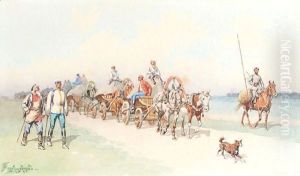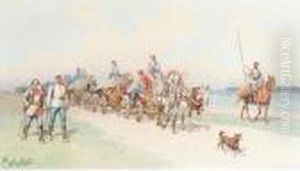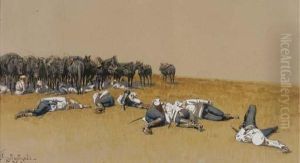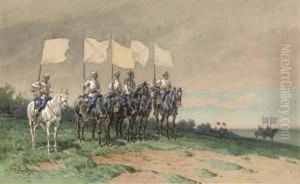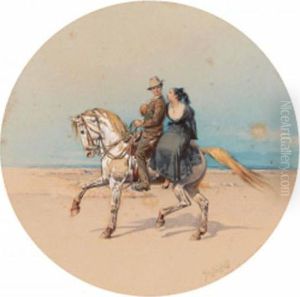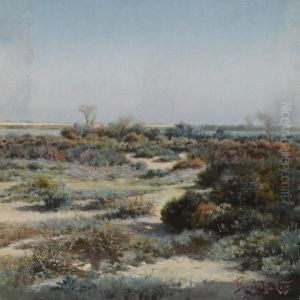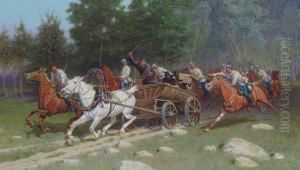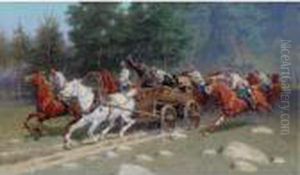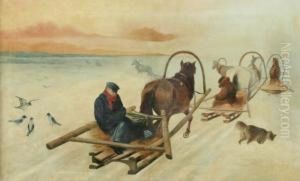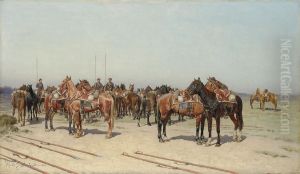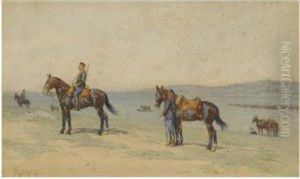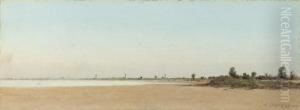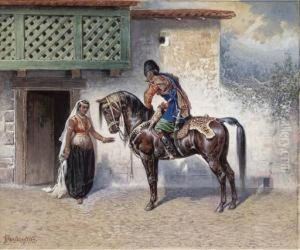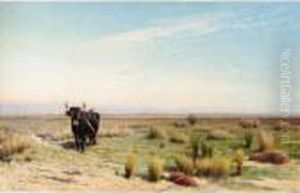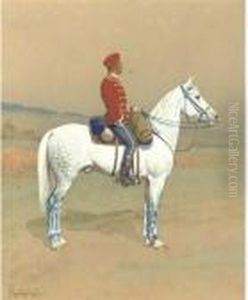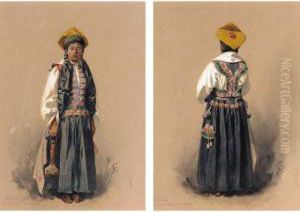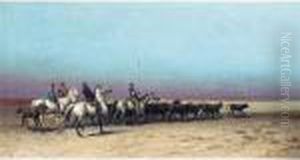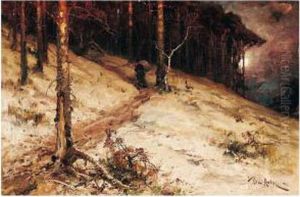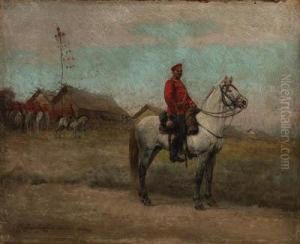Ivan Petrovich Prianishnikov Paintings
Ivan Petrovich Prianishnikov was a Russian painter, born on February 2, 1840, in the village of Timashovo, in what is now the Tula region of Russia. He is considered one of the members of the Peredvizhniki (Wanderers or Itinerants), a group of Russian realist artists who formed an artists' cooperative in protest against academic restrictions. His artistic journey began at the Moscow School of Painting, Sculpture, and Architecture, and he later continued his education at the Imperial Academy of Arts in Saint Petersburg.
Prianishnikov's works are known for their social and political commentary, often focusing on the daily lives and struggles of the Russian peasantry. He was deeply influenced by the critical realism of his time and sought to highlight the harsh realities faced by the lower classes in Russia. His painting style combined detailed character study with the depiction of the Russian landscape, imbuing his scenes with a sense of mood and atmosphere.
One of his notable works is 'Jokers. Gostiny Dvor in Moscow,' created in 1865, which earned him recognition and a silver medal from the Academy. This painting depicts merchants and their interactions in the renowned Moscow market and reflects Prianishnikov's interest in the lives of ordinary people.
Throughout his career, Prianishnikov held various teaching positions, including at the Moscow School of Painting, Sculpture, and Architecture, where he influenced a new generation of Russian artists. He became a full member of the Peredvizhniki in 1876 and actively participated in their traveling exhibitions, which aimed to make art accessible to the general public.
Ivan Petrovich Prianishnikov passed away on August 20, 1909, in his estate near Tula. His legacy is preserved through his contributions to Russian art and culture, and his works are displayed in various museums and galleries in Russia, including the Tretyakov Gallery in Moscow. Prianishnikov's commitment to realistic representation and social consciousness left a lasting impact on the development of Russian realism in the late 19th century.
